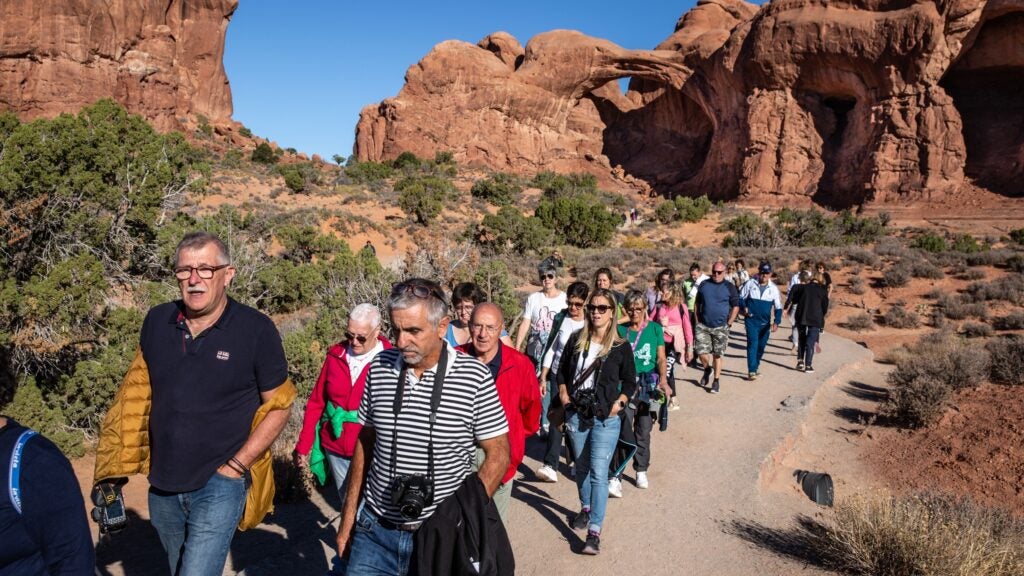I was in Hawaii with a group of friends, and a local screamed at us to go home. The island was overcrowded, and while I know tourists can be obnoxious and disrespectful, we were being conscientious. I don’t want to give up visiting the world’s most beautiful places, but I also don’t want to add to overtourism. Can I continue to wander where I want to? —Afraid of Anti-Tourists
I grew up in a tourist town on the Jersey Shore, so I understand the frustration of residents who live in vacation destinations. Each summer I’d grouse as throngs of visitors took over beaches, snarled traffic, and made parking impossible. But their tourism dollars were a boon to the local economy, and the tips I made waitressing during high season helped pay my way through college.
Now I split my time between Colorado and Maui and see how an influx of visitors impacts the environment and longtime residents. Peak season in either place—when it feels like tourists outnumber residents—is maddening, and it turns my typical routine upside down.
The local coffee shops where I sometimes work remotely from are mobbed, so I usually stay home. If I don’t do my grocery shopping as soon as stores open, I have to drive in circles indefinitely, searching for parking. Popular restaurants have hour-plus wait times, so my friends and I abandon hopes of dining out.
The Hawaiian Islands’ most recent Resident Sentiment Survey, conducted by Hawaii’s Department of Business, Economic Development, and Tourism, revealed that 67 percent believe their islands are being run for tourists at the expense of locals, and that many feel tourists show a lack of respect for them, culture, and the land. I often bike to Hana, a sleepy east-Maui town with a population of around 700, and I’ve seen residents native to Hawaii set up roadblocks and signs asking tourists to go home. I understand. This was their land.
Locals in other tourist towns have figured out ways of coping. “I avoid the downtown plaza all summer while tourists are here,” says Outside travel director Mary Turner, who lives in Santa Fe, New Mexico. “I’m happy that businesses are being supported by tourism, especially after the devastating affects of the pandemic on them. But I do get frustrated when I see visitors being disrespectful, like smoking on hiking trails during fire season.”
Kevin Rieke, a longtime local business owner in Leavenworth, Washington, who grew up hiking in the Cascade Mountains, blames Instagram for crowding his favorite trails. But he also sees the positive: thanks to a boost in tourist numbers, he says, the town now has a dozen really good restaurants that residents can enjoy in the slow seasons, and it’s easier for local kids to find jobs.
Global travel has made a comeback, and people are more eager than ever to get out in the world. According to UN Tourism, by the end of 2024, numbers will have returned to pre-pandemic levels. The International Air Transportation Association predicts that air travel this year will reach a historic high, with 4.7 billion people expected to take flight worldwide.
One of the biggest problems is that visitors continue to flock to the same places, like Venice and Paris, as well as the more popular national parks in the U.S. I include myself in that flock: I still feel compelled to visit places that are now overtouristed, like Rome and Bali. They’re bucket-list destinations for good reason.
So should you stop traveling to the world’s most beautiful places? As a travel journalist, I’m always going to encourage you to get out there and explore. But with heightened pressures on popular destinations around the globe, we could all stand to take a moment to learn how to be a more conscious tourist. Here are my suggestions.
Pay Tourist Fees to Support Local Economies
Travel meccas such as Amsterdam, Iceland, and Bali have started implementing a tourist tax for peak months to help temper visitation. Venice, which has a mere 50,000 residents, incredibly hosts 30 million visitors annually, many of them day-trippers who put little money back into the economy. Which is why, in April, the city introduced a trial fee of 5 euros ($5.45) per day on certain dates through July. The tariff has drawn criticism from residents who feel it makes visitors view their home like a park.
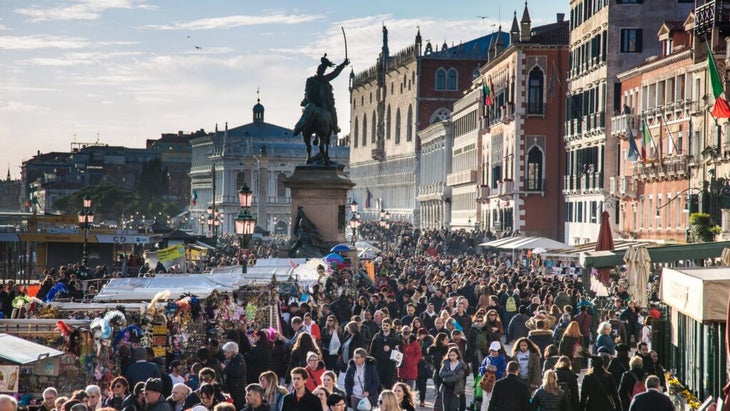
The town of Bend, Oregon, recently created a sustainability fund that puts revenue generated from a short-term-lodging tax—paid by visitors—into community-focused projects, such as a bike-park and trail improvements. “The idea is to use the money to address environmental degradation and invest in projects that locals and visitors can enjoy, so you have a social equilibrium that keeps a destination in balance,” says Todd Montgomery, the board chair for Visit Bend.
Paying a nominal fee to protect the places we love is the least we can do.
Expect to Plan Ahead and Make Reservations
The pandemic created a passion for outdoor recreation, and as a result, our national parks became overcrowded. An increasing number of popular parks in America, such as Yosemite, have implemented reservation systems for peak times. At first the planning seemed annoying, but the result is often a better quality experience for visitors and a lighter footprint on the land.

Learn Local Outdoor Etiquette
Many city dwellers were introduced to the joy of the outdoors during the pandemic, which is wonderful. But some hit the trails without basic knowledge about how to recreate responsibly.
“I’ve never seen more dog feces unpicked up, people going off route and trampling sensitive areas, Bluetooth-enabled speakers blaring out of backpacks, and Disney-like lines on sections of trails,” says Jim Deters, founder of the Gravity Haus hotels, which are located in more than a half dozen mountain towns across the West.
One of Deter’s goals with his properties is to provide visitors a truly local experience by creating an environment where they can mingle with residents—not just be served by them at a bar or restaurant. “We are the local’s gym, coworking space, and coffee shop,” says Deters. Sharing advice tends to happen organically in these settings.
Kayla Applebay, a resident and business owner in Leavenworth, Washington, says she won’t go to the rivers on summer weekends because tourists turn them into tube-clogged waterways. “You see people walking on salmon habitat, leaving trash everywhere,” she says. “Last summer a car caught on fire, and emergency services couldn’t access it because people had parked illegally.”
The town acted. In 2022, it launched a cheeky campaign called Give a Schnitzel (Leavenworth is known for its Bavarian heritage and Oktoberfest) to educate visitors on how to recreate responsibly. It also hired volunteer recreation ambassadors who post up at trailheads or river put-ins and take-outs, fielding questions and explaining rules. “They’ve probably saved quite a few lives by telling people to unleash from their paddleboards on the rapids,” says Troy Campbell, executive director of the Leavenworth Chamber of Commerce.
The upshot is: educate yourself on the area you’re going to. What’s happening there right now? What are locals concerned about? Keep up to date with issues by reading local news sites and magazines, visiting a local outdoor store and asking questions, or joining a local group-cycling ride or trail run.
If you screw up, always give a heartfelt apology. In Hawaiian culture, kids are taught Pa’a ka waha, ho’olohe ka pepeaio, nana ka maka, or “Shut your mouth, listen, watch,” says Kainoa Horcajo, a Maui-based cultural consultant. “This is how you can learn how to get along, how to fit in—and how to be a good tourist, citizen, human.”
Book Your Trip in the Offseason or a Shoulder Season
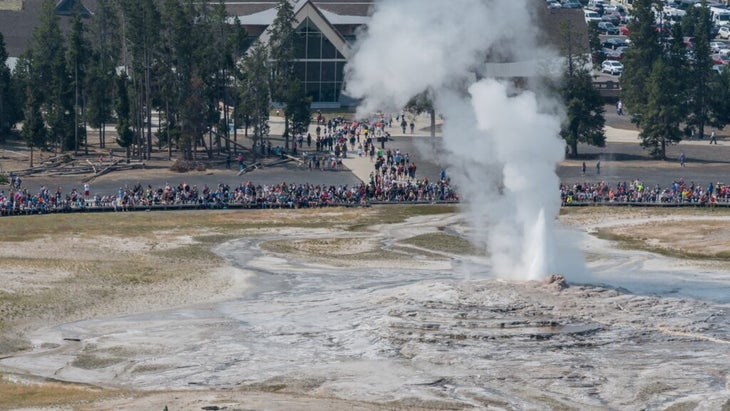
When you travel during these slower times, not only do you help reduce overcrowding but you’re also likely to have a more enjoyable experience and find better prices and more patient locals, says Amanda Ho, co-founder of Regenerative Travel, a booking platform with a collective of independently owned eco-hotels.
Spring, fall, and winter are good seasons to consider traveling to national parks and other popular places.

Stay and Play with Locally Owned Businesses
When you can be selective with the accommodations, tour guides, and experiences you’re booking, says Ho, it ensures your dollars are supporting residents as often as possible. Many locals’ livelihoods depend on tourism, so avoid big-box stores and chain restaurants in favor of eating and shopping at resident-owned places.
Some Other Rules to Travel By
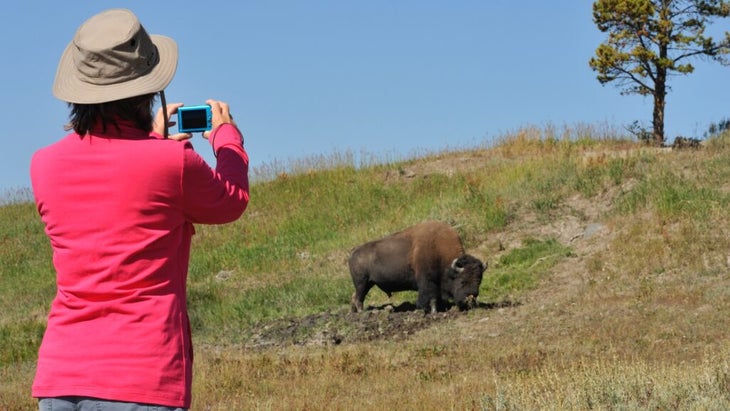
- Don’t hold up traffic. This holds true from Manhattan to Maui. When you want to take photos, find an appropriate place for it that doesn’t slow down pedestrian or street traffic.
- Don’t create your own parking spaces. The lines are there for public safety and environmental protection. In Lake Tahoe, which straddles the California-Nevada border, illegal parking can create erosion and that runoff often ends up in the lake.
- Don’t use other people’s property as a bathroom. Would you want your kids to see a grown man’s behind poking out of the trees of your yard?
- Don’t go off-trail. It can disturb flora and fauna and pose safety risks to yourself.
- Don’t approach wildlife. Not the bison in our national parks or whales or dolphins while boating or snorkeling.
- Don’t geotag popular natural attractions on social media. It may be tempting to social-boast about your epic vacation, but a viral post can ruin a destination with Instagram-obsessed crowds.
- Don’t be rude to service workers. They’re employed to make your time safe and more enjoyable. Insulting them is about as inconsiderate as it gets.
Remember That Tourism Destinations Are Fragile
Yes, many economies depend on tourism, but too much of it is bad for everyone. Overcrowding adversely affects both locals and tourists, and in the long run it can ruin the natural beauty that made a destination desirable in the first place.
Todd Montgomery, who in addition to working for Visit Bend is the director of Oregon State University’s Sustainable Tourism Lab (which describes itself as “protecting tourist destinations for future generations of visitors and tourists”), got his start working for the mega-resort conglomerate Starwood Capital Group, where he was tasked with finding the next “it” destination in Southeast Asia between 1999 and 2006.
He and his colleagues would go into rural areas, promising the positive economic benefits of tourism to locals, only to have those areas “burn out” on visitation years later.
Initially, he says, travelers “paid for the culture and nature, but when that became diluted as the result of too many visitors, they weren’t inclined to pay as much,” he says. The visitor experience was negatively affected, but the destination also suffered from some combination of environmental damages, infrastructure wear and tear, and cultural damages, resulting in economic, social and environmental costs.
“Back then we assumed there was always another next destination,” Montgomery says. “If Phuket [in Thailand] got overrun, we’d go farther south. The reality was that there are only so many next destinations. You can’t have a turn-and-burn mentality. You have to protect places.” How do we do that, I ask him?
“It feels cliché,” he tells me, “but it starts with education.”
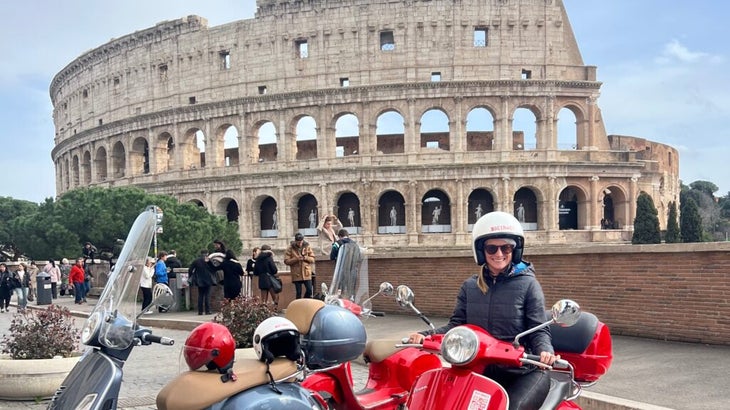
Travel-advice columnist Jen Murphy wishes she could charge people a fee every time they try to take a selfie with a turtle on the beaches in Maui or a mountain goat while hiking in Colorado.

